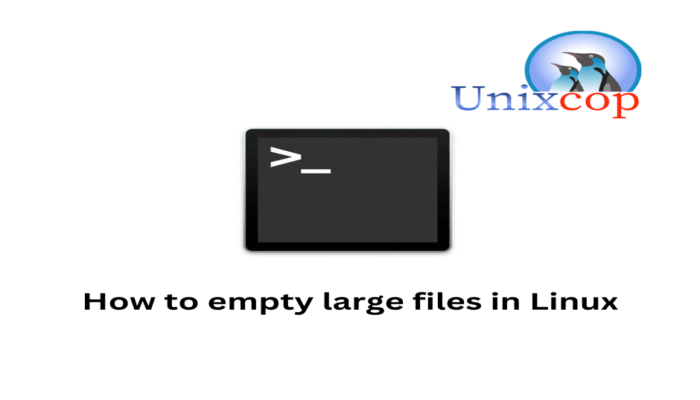Hello, friends. In this post, you will learn How to empty large files on Linux. Of course, we will use the easiest and fastest method, which is with the terminal.
In the case of Linux, it is common to deal with configuration files or text files that are very large. These can be log files, or simple annotations that are generated with the use of the system.
These files can sometimes weigh as much as GB, so the question arises as to how to empty them. You might think at this point, that the best thing to do would be to delete them, but as I told you many times, especially in log files, it might not be convenient.
So, today we will show you some ways to do it.
How to empty large files on Linux
For this post, a file called sample.conf has been created, and I have filled it with a lot of content.
Use the du command to display the time of the file, so you can verify the changes.
du -sh sample.confSample output

Now, with the file ready, let’s look at the methods.
Method 1: Using the command cat
The most common use of the cat command is to display the contents of a text file.
cat file.txtThis way, you can quickly access the contents without modifying it.
But you can also use this command to empty the contents of a text file.
To achieve this, just run
cat /dev/null > sample.confNow repeat the du command to display the change
du -sh sample.conf
As you can see, the whole thing went well.
Method 2: Redirecting to Null
Another simple method is to simply redirect to null. To achieve this, then, you can run.
> sample.confAs you can see, this is a more condensed form of the command.
Again, commit the changes
du -sh sample.confMethod 3: Using the echo command
The echo command is used to display an output on the screen, and from there you can redirect it. You can also use it to clean up the contents of a file.
To achieve this, you can use this command
echo "" > sample.confAlthough it is not the most effective method since there may be some memory leftovers, it does the job.
Conclusion
On Linux, we can do many things using the terminal because it is faster and more efficient. One of them is to empty a text file.



